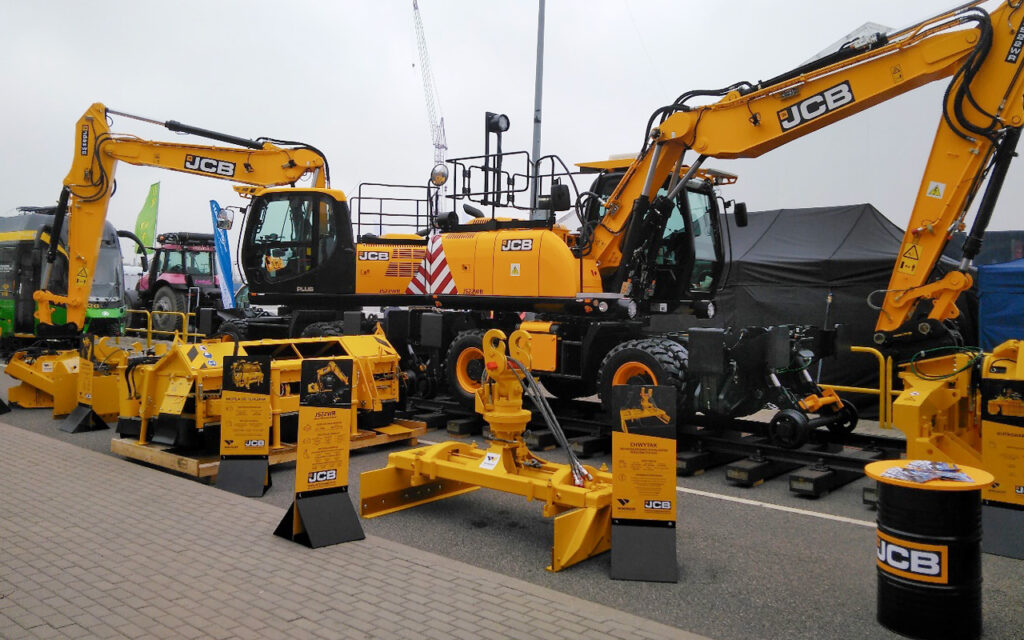Design of the guide roller system along with documentation of the roller installation, intended to enable the vehicle to move on railway tracks with a rail gauge of 1435 mm, which includes:
- set of front guide rollers,
- set of rear guide rollers,
- hydraulic system for raising and lowering roller units
- presenters,
- retaining plates protecting the excavator against accidentally running into a freight wagon or other railway vehicle equipped with railway bumpers,
- automatic towing hooks (Rockinger),
- rescue coupling enabling the excavator to be towed by a vehicle equipped with a typical drawbar hook.
Design of the installation of additional railway equipment necessary for the movement of an excavator on an open track, which includes, among others:
- railway lighting reflectors,
- railway radio,
- railway siren set.
Design and production of a control system (control box and software) for additional devices mounted on the excavator, such as:
- guide rollers,
- railway lighting,
- railway sirens,
- railway radio,
- rail brake (in terms of communication with the brake controller and displaying messages on the operator panel, and optionally displaying all diagnostic signals),
- control of selected excavator hydraulic circuits.
Design and production of cable harnesses to support modernization devices.
Modernization of the operator’s cabin (to a two-person cabin).
The vehicle’s road wheels are in constant contact with the railway rails, providing drive and braking of the vehicle. The guide rollers are designed as rolling rollers (not transferring forces related to drive and braking). They ensure safe and stable driving of the vehicle on railway tracks both while driving and while performing work activities. When passing through turnouts, the vehicle has the ability to lift the road wheels above the elements protruding above the rail heads.

